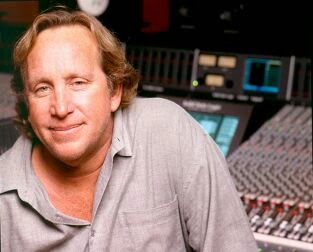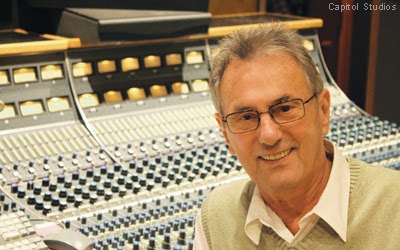I haven't posted a song analysis for a while, so here's a big hit from the recent past. It's
Lady Gaga's "
Poker Face" and it's an excerpt from my book
Deconstructed Hits: Pop and Hip Hop. Here's what's found in the book.
"Song Facts
Writers: Stefani Germanotta, Nadir Khayat
Producer: RedOne
Studio: Record Plant Recording Studios (Los Angeles)
Release Date: September 23, 2008
Length: 3:58
Sales: 10+ million (single), 15+ million (album)
Highest Chart Position: #1 U.S. Billboard Hot 100, #1 U.K. Singles Chart, #1 in Australia, Belgium, Canada, Finland, France, Germany, Mexico, Norway, Sweden, and Switzerland
“Poker Face,” from Lady Gaga’s debut album The Fame, was the song that catapulted her to international stardom. The song was #1 virtually worldwide and became one of the biggest-selling singles of all time at over 10 million. It was nominated for both Record of the Year and Song of the Year at the 2010 Grammy Awards, and won for Best Dance Recording. Rolling Stone ranked it #93 of the 100 Best Songs of the 2000s, while NME placed it at #103 of the 150 Best Tracks of the Past 15 Years.
The album was a huge hit as well, peaking at #2 but staying in the U.S. Billboard Hot 200 for an unbelievable 100 non-consecutive weeks. It was nominated for six Grammy Awards and won for Best Electronic/Dance Album. It also won Best International Album at the 2010 BRIT Awards.
The Song
“Poker Face” was a huge hit for Lady Gaga, and a close listen to the song tells you exactly why; it has everything we’ve come to expect from a mega-hit. First of all, the song form may be pretty basic, but it’s expertly put together to keep the interest high, since there’s always forward motion and dynamics. The form looks like this:
intro ➞ verse ➞ B section ➞ chorus ➞ interlude ➞ verse ➞ B section ➞ chorus ➞ interlude ➞ bridge ➞ chorus ➞ chorus ➞ chorus ➞ interlude/chorus ➞
interlude/chorus ➞ interlude/chorus
What’s especially interesting is that both the bridge and interlude/choruses at the end of the song are primarily choruses with either new parts or a combination of new and previously heard parts. It’s a great way to keep things familiar yet different.
The melody is strong and memorable, and turning “Mum mum mum mah” into a hook was genius. The lyrics are far superior to most pop songs in that they tell a story and are cleverly put together. Good examples are “Russian roulette is not the same without a gun” and rhyming “promise this” with “marvelous.”
The Arrangement
“Poker Face” begins with a single arpeggiated synth that makes up the backbone of the song, and it is followed by an additional synth layer playing the same part. Then, the song’s hook, the “Mum mum mum mah” background vocal part, enters along with a new synth line. After the line plays through once (4 bars), it plays through a second time—with kick, claps, and open hi-hat—to end the intro.
When the lead vocal enters at the verse, only the kick and basic arpeggiating synth remain for the first half. At bar 9, the synth line from the intro enters, as does a very subtle percussion sound.
A new synth enters on beat 1 of the B section to signify the beginning of the section, but other than the vocal changing (the backgrounds sing “Oh, oh, ohhhh, oh, oh”), the instruments remain the same until the downbeat of the last bar, when the music stops except for a combination of a guitar-string-scratch glissando and a synth whoosh sound behind the lyric “Show him what I got.”
On the chorus, all the instruments reenter with the addition of a string pad, claps, open hi-hat, and a new synth emphasizing the upbeats. The vocal sings the chorus hook (“Can’t read my, can’t read my poker face,”) and the background vocals answer. At the interlude, the strings, claps, and hi-hat all drop out, and a new synth plays only on the downbeat of the first measure.
Unusually, the second verse, B section, chorus, and interlude are all the same as the first with no changes. The bridge begins again with the same instrumentation as the interlude, only with a new synth line that plays by itself for 4 bars and is then joined by Gaga’s sing/talk for another 8 bars.
The last chorus then begins, but without the drums for 4 bars while you hear the guitar-string-scratch glissando. The drums enter while Gaga sings another “Can’t read my, can’t read my poker face,” and the next time the line is repeated, a lower harmony is added. The song then goes into the interlude lyric (“P-p-p-poker face…”) over the chorus instruments and chord changes, and the song ends on the last phrase of the answer (“Mum mum mum MAH”).
Arrangement Elements
The Foundation: Kick drum
The Rhythm: Synthesizer, claps
The Pad: Strings during the chorus
The Lead: Lead vocal
The Fills: Background vocals
The Sound
What strikes you most about the sonics of “Poker Face” is the use of echo to set the ambience. The prominent long delay that’s timed to the track (probably a quarter-note delay) fills up the space where there’s no vocal and at the ends of phrases on both the lead and background vocals. One place where it can be clearly heard is the male “Hey!” after the end of the first phrase of the second verse, where you can distinctly hear the echo ping back and forth between the speakers. This can also be heard on the lead vocal on the second B section.
It’s also interesting that Gaga’s verse vocals are doubled but not very closely, which produces an interesting effect. This especially sets up the bridge, when the vocal is only a single track, making it sound much different from the vocal on the rest of the song.
The panorama of the soundfield is also put to great use in “Poker Face” by having some elements strictly in mono and others in stereo. For instance, the synth line in the intro and bridge is in stereo, and that provides a lot of space for the lead vocal as a result. The background vocal answers are all in stereo, while the drum elements of kick, snare, and cymbal are all in the center.
Finally, the mix balance is interesting because there’s no real bass instrument, so the kick drum uses up much of that sonic space. The fact that there are a number of synthesizers parts more or less from the same family of sound (possibly even the same instrument) yet all are easily distinguishable is a tribute to a great mix by Robert Orton.
Listen Up
To the synth that plays only on the upbeats of the chorus.
To the cross echoes on the lead vocal during the second verse.
To the guitar-string-scratch glissandos and synth sound effects at the turnarounds between verse and chorus.
The Production
“Poker Face” is evidence of the new sound of pop-hit production, which no longer depends on a bass guitar to fill out the bottom end of the frequency range. The song was produced by RedOne and is entirely programmed except for the vocals. Where once upon a time that meant the song would be stiff and robot-like, “Poker Face” is imminently danceable with a terrific feel, and it breathes as parts enter and are removed.
As with all hits, the details are what make the song. Take, for instance, the harmony answer vocals in the chorus, which are pretty subtle but really lift the song and almost sound like a harmony vocal to the lead. The low harmony part on the pre-chorus (the B section) also helps to develop the dynamics of the song. Add these subtleties to the gigantic groove and you have a massive hit."
To read additional excerpts from the
Deconstructed Hits series and my other books, go to the excerpts section of
bobbyowsinski.com.
----------------------------------






































